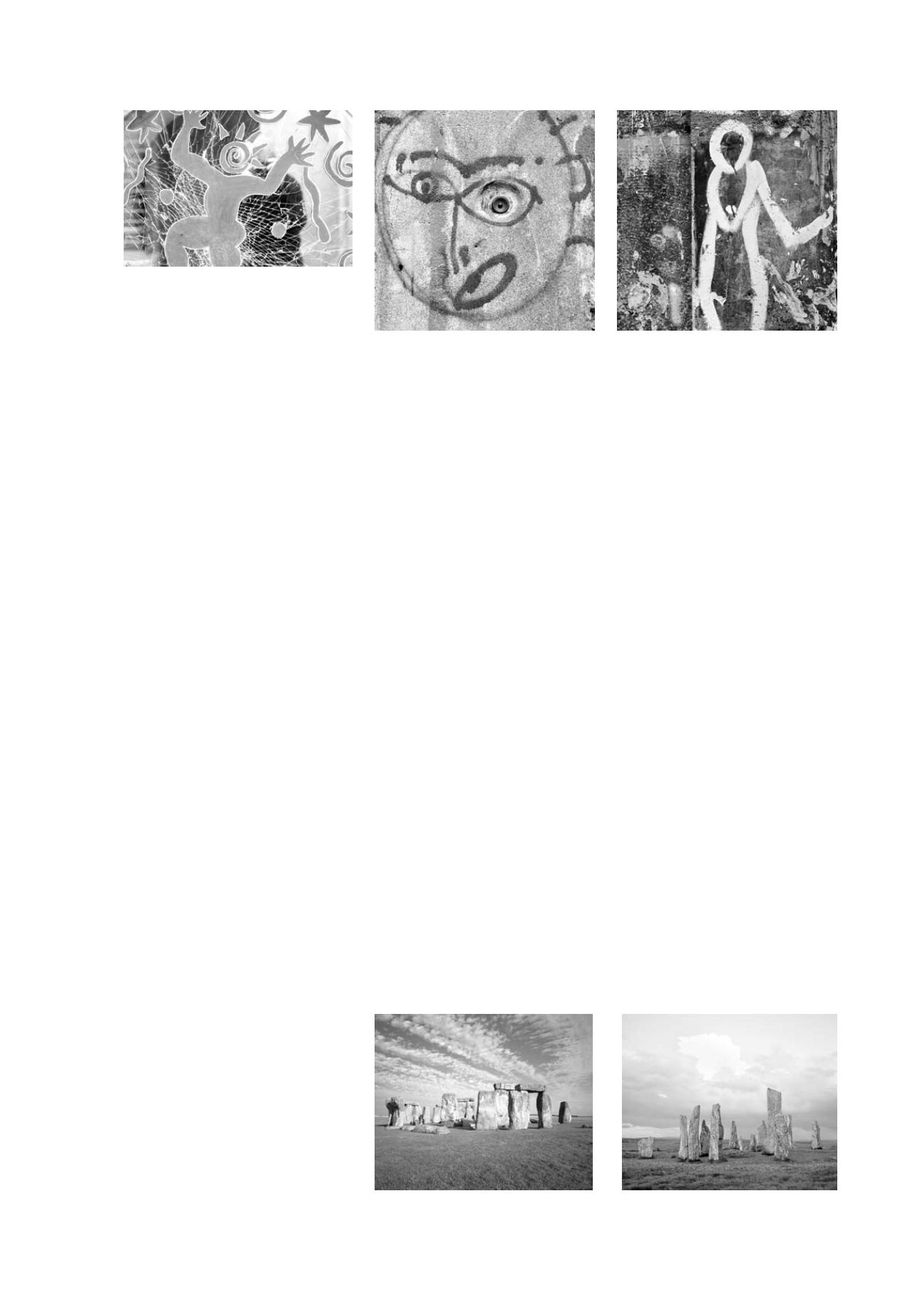
4
5 -Win Labuda “Dancing Venus“, Paris,
2000
6 -Win Labuda “Button Eye“, Paris, 1999
7 -Win Labuda “Homage to theWild
Ones“, Paris, 1999
The artistic-looking signs and drawings of the station “Pictures and
Signs“, which were created by unknown “wall painters“ and similar
graffiti artists and which you meticulously photographed, allow forms to
be recognised, which interestingly are also known from the painting of
the twentieth century. As representative for this station I have selected
the photographs “Button Eye“, “Homage to the Wild Ones“ and “Dancing
Venus“.
With the station “Home of the Gods“ the question arises: Why undertake
artistic photography of edifices of megalithic culture? For me this modus
operandi corresponds to thinking in the Western tradition: These photo-
graphs want to rescue the memory for the future. The archaic corre-
sponds to Western as well as to Jewish thought: In many cultures, rites
and stories again and again revive what has been handed down, i.e.
contact between the present and primordial time is constantly
maintained [11]. Photographic examples of this are your pictures
“Stonehenge III“ and “Callanish Stone Circle I“.
The graphic and sculptural work
Your visual cycle “Line, Surface, Space and Time“ consists of these four
series of the same name. The series “Time“ refers to one of the most
important phenomena of philosophy and science. For this reason, I will
introduce this chapter with two quotations:
Knowledge and Being are the same
.
by Parmenides - and
Time reveals itself as the horizon of being
.
by Heidegger.
If both philosophers are right, time manifests itself as horizon of
knowledge [12]. Thus, three important questions are posed:
8 -Win Labuda “Stonehenge III“,
England, 2002
9 -Win Labuda “Callanish Stone
Circle I“, Isle of Lewis, Hebrides, 2004


